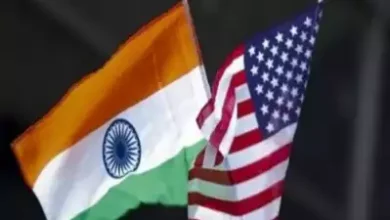Odisha Train Disaster: ‘Silent Saviour’ Cut Toll in Half, According to Rly Official | All About LHB Coaches
A rolling stock officer of the South Eastern Railways expressed gratitude for a “silent savior” — Linke Hofmann Busch (LHB) coaches — which he believes cut the toll to at least half in the triple train accident in Odisha last Friday, which cost more than 270 lives.
At a speed of 128 kmph, the Coromondal Express rear-ended a stopped freight train. It was a coaches rake measuring 23 LHB and weighed around 500 TN. Iron ore weighing around 6000 TN was loaded onto the cargo train. According to the officer, the collision was like “a mad steel giant crushing into a hill.”
He said that it was “understandable” that the 12 times lighter Coromondal Express suffered the most damage. But without the coaches, it would have been far worse, he continued.
The officer explains why the high-safety, German-technology coaches are superior to the previous Integral Coach Factory (ICF) models and how they helped:
Anti-telescopic: These coaches have a sturdy end wall to guarantee optimal safety. It is equipped with stanchions or a barrier that deflects impact energy and prevents coaches from colliding with one another or forming a pileup during strong impacts.
Crumpled zone: A structural element intended to crumple under controlled force upon contact to absorb kinetic energy. Tubular pipe structures in the underframe along the end walls and below the toilets are susceptible to deformation or compression during collisions and serve to absorb energy. This technique aims to safeguard the coach’s primary passenger area located between two entrance corridors.
Interior without injuries:The interiors of LHB coaches are designed to prevent passenger injuries in the event of a collision, derailment, or other form of accident. This increases the coaches’ crashworthiness. When the accident occurs, the passengers are uprooted, dispersed, and flung about, and as a result, they strike the coach’s interior. Then, the fittings’ and the upholstery’s sharp edges and corners seriously hurt the passengers. They sustain injuries from fallen bags as well. The chance of such injuries is reduced by LHB coaches.
Modern center buffer couplers are designed to stop linked coaches from stacking or climbing on top of one another in the event of an accident or derailment.
According to officers working on the rescue and repair efforts, if the old ICF coaches had been there, additional passenger cars would have built up, increasing the risk of fatalities. In past catastrophes, such that in Gaisal in 1999 and Firozabad in 1995, this was the situation.
PUSH BY MODI GOVT
LHB coaches have a long history in India.
In the late 1990s, the Indian Railways and the German LHB firm entered into a contract. The Railways began building LHB coaches at the Railway Coach Factory in Punjab’s Kapurthala thanks to a technology transfer arrangement.
As soon as the Modi administration took office, it pushed for LHB coaches to take the position of ICF coaches. The Integral Coach Factory in Perembur, Chennai, and the Modern Coach Factory in Bareily thereafter began producing LHB coaches.
According to the fact sheet, almost 33,000 LHB coaches have been made thus far. In 2022–2023, the Railways’ coach manufacturing facilities doubled their capacity. To enable comfortable and quick mobility, 4,175 LHB buses were created until January 31.







